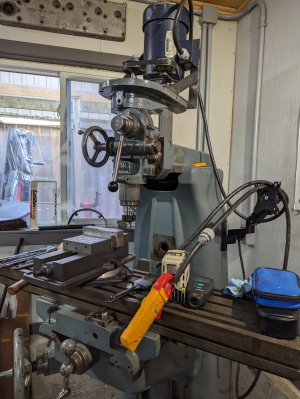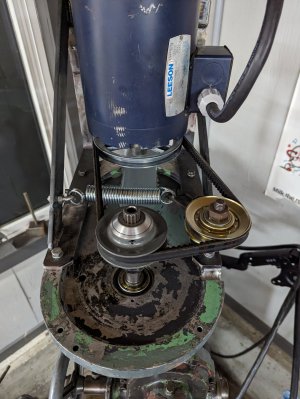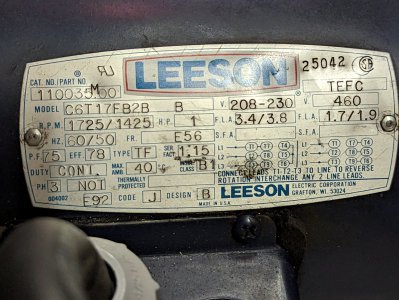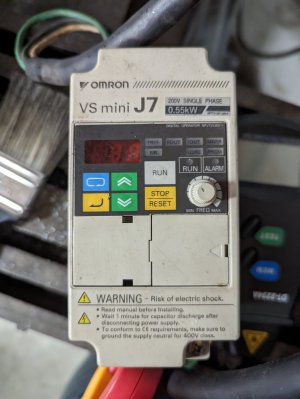- Joined
- Sep 25, 2021
- Messages
- 26
Working on converting my Fray mill to use a 3 phase motor with a VFD. I've fabricated the mount and wired the VFD for testing, and a strange issue has cropped up. With no pulley connected the motor runs up to 100hz without issue, sounds great. When I connect the pulley to drive the spindle however, the motor seems to stall out/slow down after exceeding around 80-85hz or about 5000rpm spindle speed, this is just free spinning, not making chips. In the lower RPM range it makes chips just fine, but at around 5000rpm spindle speed it gives issues.
Belt tension isn't excessive, its just tensioned with a spring. The machine is quite loud when free spinning so maybe the spindle bearings need service? It might also be my idler pulley, its hard to tell. But even with worn bearings it shouldn't create enough resistance to stall a motor. The original brochure of this machine says the spindle is good for 6400rpm, so what I'm asking of it shouldn't be out of line.
I know my VFD is a bit small for this motor, but it should only have an issue under heavy load I would imagine. Maybe I just need a bigger VFD?
Belt tension isn't excessive, its just tensioned with a spring. The machine is quite loud when free spinning so maybe the spindle bearings need service? It might also be my idler pulley, its hard to tell. But even with worn bearings it shouldn't create enough resistance to stall a motor. The original brochure of this machine says the spindle is good for 6400rpm, so what I'm asking of it shouldn't be out of line.
I know my VFD is a bit small for this motor, but it should only have an issue under heavy load I would imagine. Maybe I just need a bigger VFD?





